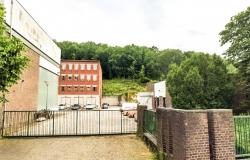From silent cinema to “The area of interest”, the moviegoers’ choices of our editor -in -chief guest draw the portrait of a spectator carried by a curiosity and a search for emotion that cross the decades.
The short films of Charlie Chaplin
When my school took us to the cinema to see the short films of Charlie Chaplin, I was 6 years old. I remember everything. From the cinema room which has become a garage and which was located just behind the building in which we lived with my mother and my sister. From the exact place where I was positioned in the room. From the siege too high, my feet did not touch the ground. And I remember how overwhelmed I was by the power of the image, the power of the mute, the power of the fable. The cinema allowed me to laugh and cry at the same time, a paroxysm of emotions. Invaded by the happiness of living with Charlot, to share his inconsolable solitude, I was fascinated by his continual invention, his freedom, I wanted to keep everything.
The passion of Joan of Arc (1928) de Carl Theodor Dreyer
My mother made crosses on all the films I had to go see when I was going to Paris in summer – at the time, we lived in the countryside. One of them was The passion De Joan of Arc to Dreyer. This film was a shock. That of discovering that a face filmed in tight plans could contain all the human. We discover a young woman exposed and put down, sounded by the brutality of the world but in connection with an interiority which does not belong to this world. The film holds us in the absurdity of these worlds which do not meet. Dreyer found Renée Falconetti while she was playing in a Boulevard theater comedy. He saw in her his strength of commitment and his ability to embody this descent in hell. They shot six months. I was 16 when I discovered this film, it was a cinema reference in my life.
-Bus Stop (1956) with Marilyn Monroe
When we prepare Appointment [1985], André Téchiné told me that he would like my voice to get closer to that of Marilyn Monroe. I bought a vinyl of his songs. As I had never seen it in the cinema before, I met Marilyn by her voice. I discovered his dexterity to sing and the sensuality of his voice. Then I went to see Bus Stop by Joshua Logan. The film is bad, but it … it was in the great action, and Leos [Carax] was waiting for me outside. Leaving the room, I ran in his arms, as in an epiphany. I was affected by beauty, Marilyn’s vulnerability. She raised me towards something so fragile and so palpable. It was embodied femininity. When I learned that she had been abandoned, raped, mistreated by the film industry, I had another look. I felt great sadness. By her skin, her eyes, her voice, her light, she expressed all the contradictions with infinite generosity … We feel in her a chaos that she has managed to transfigure.
All Béla Tarr movies
Béla Tarr’s cinema is the cinema of infinity. His images are imprinted in me and do not leave. He is looking for a destitution to get to the center of things through the visible. We feel carved by the length of the plans, this singular relationship to time, this invention of unpublished durations. It is a spiritual experience, the search for a quintessence. His films dig what’s behind things, indescribable, which is not touching. The Turin horse [2011] stayed in me forever: I was turned upside down by his way of filming the cold, the wind, a harsh and raw sensuality. An experience of life but transmuted in artistic form, therefore an increased experience.
The area of interest (2023) by Jonathan Glazer
I do not remember having already been impressed by the work of sound on a film. It is through the sound that the invisible and unbearable horror says. Rarely has managed to embody a presence in an absence at this point, showing by not showing. It does it by a variety of details, a rare staging subtlety. And I find it great that the film is so recent. That we can still go so far in the reinvention of cinema tools, in the development of new forms. Do not just do cinema with habits. Going to the new one is going into the real one.







